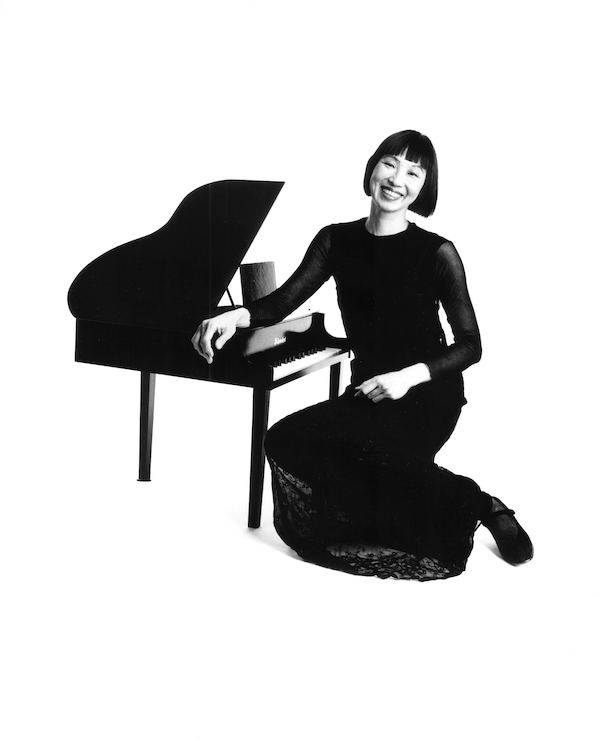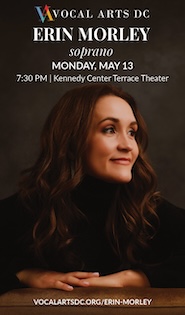Cage’s piano music embraces the world at Kennedy Center

True experimentalists keep you guessing.
Even within the circumscribed parameters of Margaret Leng Tan’s John Cage recital at the Kennedy Center on Wednesday—all works from the 1940s for keyboard, written to be choreographed—the most consistent impression was of Cage’s essential wiliness, searching for his distinct voice while mastering and apotheosizing the search itself.
The program, marking the opening of the Kennedy Center’s brief, four-day observance of choreographer Merce Cunningham’s centenary, was a slice of Cage’s pre-aleatoric, pre-electronic style: resourcefully ascetic, channeling the let’s-put-on-a-show scrappiness of the early careers of Cage and Cunningham, near-lifelong artistic and personal partners.
Triple Paced arranged low, ringing drones, pentatonic tinkling, and swoops across the piano’s interior strings in a simple mobile, sketching the outlines of an implied richness. Mysterious Adventure epitomized the soft-spoken exoticism and efficiency of Cage’s enduring invention, the prepared piano: gentle clangs and knocks that uncannily echoed a gamelan ensemble, however much Cage denied that influence. (The combination of title and timbre even anticipates, say, Martin Denny.) Still, Ad Lib, a jazz-tinged exercise, partially proved Cage’s point, replacing Japanese-like pentatonic scales with bluesy derivatives, but otherwise maintaining the modular, meditative mood.
Tan was an expert guide to this repertoire, having lived with it and in it for years. In lieu of program notes, she introduced each number in genial, chatty, somewhat rambling fashion, often drawing on her long association with Cage himself. Her playing started off skittish but rapidly settled into easy, confident clarity.
The venue, the Skylight Pavilion of the REACH campus, highlighted both the rough edges and promise of the Center’s newest addition. The lighting was not ideal—Tan finally had the house lights brought up in order to see more clearly—the acoustic occasionally manifested harsh, and the incursion of outside noise was constant. At the same time, it is hard to begrudge any vehicle that brings Cage’s music into the District.
After intermission—during which Tan prepared and re-prepared two Steinways, while a substantial portion of the audience hovered and watched—the music was even more distilled. Bacchanale, Cage’s first prepared-piano experiment, obsessively circled its additive rhythms and limited sonic palette. The 1948 Suite for Toy Piano boiled its vocabulary down to a resourceful nine-note, white-key minimum. Dream (arranged by Tan so that its repetitions moved between piano and toy piano) leaned on a haze of pedal and overtones.
Even more outwardly dramatic music had similar machinery. Ophelia, a souvenir of Cage’s fascination with (as Tan recalled) “the disturbed mind,” created expressionistic menace almost exclusively through contrast: loud or soft, heavy or sparse, high or low. (It’s as if Cage was recreating the style of his teacher, Arnold Schoenberg, but without any of Schoenberg’s constantly-evolving in-painting.) And In the Name of the Holocaust organized various territories of the piano—its own sound, the prepared-piano alterations, and the interior strings—into brooding procession. Apologizing for ending on such a “dark note”—“but these are dark times”—Tan encored with Yuichi Matsumoto’s spoken-word-and-toy-piano setting of a portion of Cage’s Composition in Retrospect.
Every piece restlessly adopted new limitations, the paradoxical promiscuity of restriction that spurred Cage throughout his career. It was like watching Houdini try on straitjackets, deciding which one would inspire the most effective escape.
One path emerged in The Seasons, the substantial, Indian philosophy-influenced cycle that Cage composed in 1947 for Lincoln Kirstein’s Ballet Society of New York. For all its dense ambition, the work’s basic move—a crunchy, curt chord yielding a lone, sustained note—plainly foreshadowed Cage’s subsequent breakthrough: pulling a sound out of the crowd and revealing it as an entire world.




Posted Oct 04, 2019 at 10:16 pm by Margaret Leng Tan
Just for the record:
Glare in your eyes + shadow on the keys = skittish!